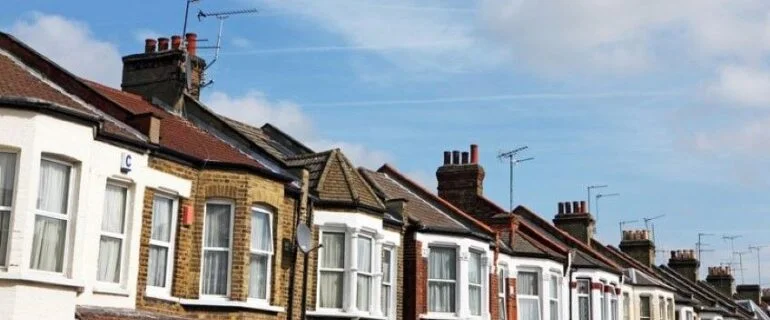Table of Contents
- How do standard variable rates work?
- What is an SVR mortgage?
- How often does a standard variable rate change?
- What is the current standard variable rate?
- Are standard variable rates falling?
- How do SVR mortgage rates compare?
- How long do standard variable rate mortgages last?
- What are the advantages of SVR mortgages?
- What are the disadvantages of SVR mortgages?
- Should I stay on the standard variable rate?
When you first take out a mortgage, there are different types of interest rate you could be paying. It could be a fixed, a tracker or a discount rate. But they are all likely to switch to a standard variable rate eventually. Here’s everything you need to know about standard variable rate mortgages.
Compare Mortgage Deals
Use our mortgage comparison tool to compare mortgage deals from across the market
How do standard variable rates work?
A standard variable rate (SVR) is an interest rate set by your lender. It is the default interest rate that mortgage customers are moved onto when their initial deal ends. For example, if you take out a two-year fixed-rate mortgage and don’t remortgage before the two-year deal period expires, you will be moved onto your lender’s SVR.
It may be the case that the SVR is higher than the interest rate you were paying on your initial deal, and your monthly repayments will rise. However, you are usually free to take out a new mortgage deal and move away from the SVR whenever you want.
Because it is a variable rate your lender can also change the SVR at any time. If a lender decides to increase its SVR you can expect your monthly repayments to go up. Equally, if a standard variable rate falls, the repayments on an SVR mortgage will usually fall.
What is an SVR mortgage?
You will have an SVR mortgage if you are paying your lender’s standard variable rate of interest. Often people who have an SVR mortgage have been moved onto it automatically when their initial fixed, tracker or discount mortgage deal ended. However it may also be possible to take out a standard variable rate mortgage and pay a lender’s SVR without taking out any of the other types of mortgages first.
How often does a standard variable rate change?
Lenders are allowed to alter their standard variable rates whenever, and by how much, they like.
Changes in the Bank of England base rate may influence a lender’s thinking when setting their SVR, but a fall in the base rate doesn’t guarantee that an SVR will fall too. This is different to a tracker mortgage where the mortgage rate automatically follows the base rate.
Even if a lender decides to alter its SVR following a base rate change, it may not change by the same amount or straight away.
The cost of funding mortgages, the economic outlook and a lender’s targets in respect of lending volumes and attracting savings, are some of the other factors that may be considered alongside the base rate when setting an SVR.
What is the current standard variable rate?
Different lenders can have different SVRs so there isn’t a single current standard variable rate. Lenders will usually show their current SVR on their website and should inform standard variable rate mortgage borrowers if their SVR is changing.
Are standard variable rates falling?
Standard variable rates have been falling, mainly due to the base rate of interest being cut twice in 2024. At the beginning of December 2024, the average standard variable rate stands at 7.85%, compared with 8.19% a year earlier, according to Moneyfacts.
How do SVR mortgage rates compare?
Generally, standard variable rates are higher than the rates available on other types of mortgages. For example, at the start of December 2024, the average five-year fixed mortgage rate stood at 5.28%, compared with the average standard variable rate of 7.85%.
» MORE: Current mortgage rates
How long do standard variable rate mortgages last?
Typically standard variable rate mortgages don’t have an initial deal period like a fixed-rate mortgage. This means you can stay on the SVR for as long as you like and switch to a new deal whenever you wish without paying an early repayment charge.
What are the advantages of SVR mortgages?
The main benefits of a standard variable rate mortgage include:
- Flexibility – Most SVR mortgages won’t have early repayment charges. This means you can overpay your mortgage or switch to a new mortgage deal without facing fees or penalties.
- Low fees – If you take out a mortgage which charges the lender’s SVR from the outset it is likely to have a low, or possibly no, arrangement fee.
- Potential for rate to fall – because SVR rates are variable, they could go down as well as up.
What are the disadvantages of SVR mortgages?
The main drawbacks of standard variable rate mortgages include:
- Expensive – Standard variable rates are usually substantially higher than the best mortgage deals.
- Rates can rise – Your lender can change the SVR at any time which can result in your monthly repayments rising at short notice.
Should I stay on the standard variable rate?
If your current fixed, tracker or discount mortgage deal is about to end, or if you’ve already moved on to your lender’s standard variable rate, it may make sense to remortgage onto a new deal, particularly if you could save money by doing so.
If the rates available on other types of mortgages are lower than your lender’s SVR, remortgaging will bring your monthly repayments down.
That said, there are times when it may make sense to stay on a SVR. For example, if you want to move house or repay your mortgage soon, being on a standard variable rate means you can do so without facing early repayment penalties.
Similarly, if you have nearly finished repaying your mortgage, the remortgage costs involved may mean it’s not cost-effective to take out a new deal. If you only have a small mortgage amount left, you may also struggle to remortgage where lenders have a minimum mortgage amount that you must take out.
If you aren’t sure what to do, you may want to seek mortgage advice to help work out which option is likely to be best for you.
» MORE: How remortgaging works
Image source: Getty Images








